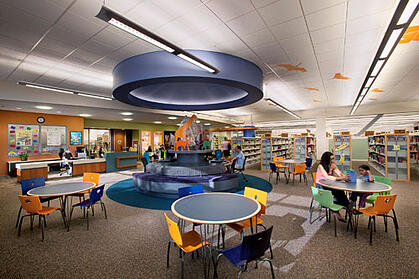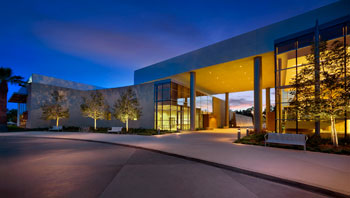Library Design Secrets: Part 1
 Why do people love libraries? Cindy Wang loves them for the free knowledge. While Lindsey O'Connor tweets, "they comfort me with sweet childhood memories of hours lost in other worlds, books as friends." To uncover how a library's design can support and enhance these user experiences, we've asked Senior Design Principal Rick D'Amato to share all in a multi-part series. With more than 15 libraries under his belt, he's a wealth of information and design expertise.
Why do people love libraries? Cindy Wang loves them for the free knowledge. While Lindsey O'Connor tweets, "they comfort me with sweet childhood memories of hours lost in other worlds, books as friends." To uncover how a library's design can support and enhance these user experiences, we've asked Senior Design Principal Rick D'Amato to share all in a multi-part series. With more than 15 libraries under his belt, he's a wealth of information and design expertise.
DESIGN BALANCE
Libraries are experiencing a wonderful transition from traditional storage facilities for books, to expressive community spaces with enhanced media and digital capabilities. For quite some time, the more contemporary aspects of library design have been awkwardly positioned throughout the typical library with little or no relation to traditional library service.
Today's library is a complete and total blending of community space, media and the digital world. We are experiencing a renaissance of library design which will help carry lifelong learning into the future. Interactive kiosks, expressive, group based children's and teen centers, flexible community rooms and technology centers help to attract a wider patron base while also offering many more services than the traditional library of the past.
This combination of books, technology and community space is changing the very nature of library planning. No longer is technology cramped into a corner or locked into a dark room. No longer are libraries rigid and static. The library of today seems to be taking cues from the retail world in both the visual aesthetic as well as the incorporation of more diverse media and community offerings.
One of the main goals of library design is to not only attract new patrons, but to hold onto those patrons once they are inside. Making a library as comfortable and as accessible as possible leads to a patron feeling "at home" within the space.
Furnishings seem to be moving away from the hard wooden chairs of the past. Today's library is furnished with a wide range of seating and lounging options, all designed to promote a longer, more comfortable stay. Group study rooms are starting to incorporate more ergonomic seating choices while children's areas are furnished to promote interaction between parent and child.
For successful library design it is imperative that the librarians are an active participant in the design and building process. It is even good practice to have librarians on the selection committee for designers and contractors to assure a good working relationship.
Libraries can be very personal spaces to a community and no one understands that better than the librarians. Regular meetings to review the design intent as well as the construction process are necessary to keep everyone on the same page. The integration of community workshops and presentations are also a great way to understand the nature of the community and the type of facility that they need and deserve.
For more library design secrets, be sure to subscribe. In our next post, we'll grill Rick about security, indoor air quality, historic book archives and more.
LINKS
http://www.wbdg.org/design/libraries.php
http://americanlibrariesmagazine.org/librarydesign10
http://www.librisdesign.org/docs/SustainableLibDesign.pdf
http://www.homelibrarydesign.net/


